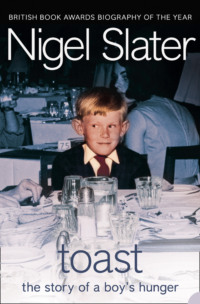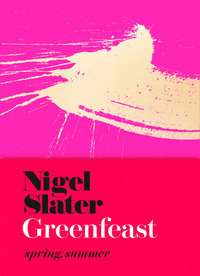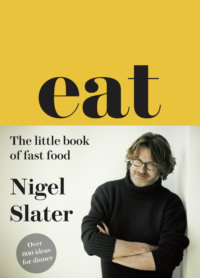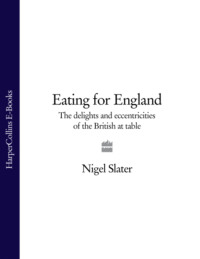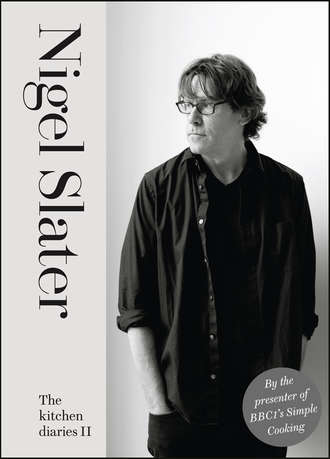
Полная версия
The Kitchen Diaries II
Spelt is said to be easy on the digestion and I have to agree. Some of us who find modern wheat heavy and soporific have no such trouble with the modern versions of ancient strains such as spelt. The ancestors of this mild, nubby grain spread across central Europe during the Bronze Age and were in common use in southern Britain by 500BC. Available for years in the sort of food shops that smell of brown rice and massage oil, spelt has recently taken a step towards the mainstream.
The sense of peace and humble bonhomie you get from simmering grain (akin, I think, to Chinese dumplings steaming in their bamboo baskets) is slightly lost when pearled spelt is stirred into a risotto but is there in spades when it is simmering in water, its steam rising in soft clouds. Like brown rice, it has an affinity with mushrooms, onions and the more earthy spices, but has less of the hardcore ‘wholemeal’ character.
A little brown stew of mushrooms and spelt
Use fancy mushrooms if you wish, but I rather like this made with an everyday mixture of flat ‘field’ mushrooms and the small chestnut variety. Add the mushrooms according to their size and thickness, leaving anything particularly small and delicate till last. By field mushrooms I mean the wide, flat variety that are usually served on toast.
dried mushrooms: a tablespoon (8g)
pearled spelt: 250g
a medium onion
olive oil: 4 tablespoons
garlic: 2 cloves, crushed
assorted fresh mushrooms: 850g
tomato purée: a tablespoon
plain flour: a tablespoon
dried chilli flakes: ½ teaspoon
Put the dried mushrooms in a heatproof bowl, cover with 500ml hot water from the kettle and set aside.
Boil the spelt in lightly salted water for fifteen minutes, then drain and set aside.
Peel and roughly chop the onion. Warm the olive oil in a large pan. Add the onion and leave to soften, with the occasional stir to stop it burning, over a moderate heat. When it is pale gold – a matter of ten to fifteen minutes – add the crushed garlic and continue cooking for two or three minutes.
Finely slice the fresh mushrooms. Stir them into the onion and continue cooking for about five minutes, till they are starting to colour.
Stir in the tomato purée. Cook for two or three minutes, then stir in the flour. Pour in the dried mushrooms and their soaking water and bring to the boil. As soon as the liquid is boiling, lower the heat, season with salt and black pepper and stir in the dried chilli flakes. Leave to simmer for ten minutes, then add the cooked spelt. Cook for a further ten to fifteen minutes, until the mushrooms are soft and silky and the sauce is rich and lightly thickened. Serve in shallow bowls.
Enough for 4
FEBRUARY 10
Down to the bone
Having work done on the kitchen has given me the privilege of seeing the bones of this house. Not just the oak laths and plaster but the long joists that form the skeleton of the old girl. Peering beneath the sagging ceilings, walls and floors has given me a clue as to how the building, and particularly the kitchen, was built. There is something empowering about knowing how something was put together – a toy plane (yes, I was one of those Airfix kids), a house, a car and most of all, a recipe.
I get pleasure from cooking with the bits of an animal that clearly show their function – what they do and where they fit in. The neck, tail, shanks and shoulders all allow you to see form and function (I particularly like cutting the string on a neatly butchered ring of oxtail and sorting the strong, broad bones from the tiny cartilaginous ones at the flicking end). Getting to know what a piece of an animal did can help us cook it appropriately. It is probably a generalisation to suggest that the more work a joint of meat had to do, the longer it will need to cook, but it is true that the hard-working shanks and neck will take longer to come to tenderness than the fillet, which never did a day’s work in its life. A chop from the loin will cook quicker than a chop from the ever-bending neck.
The butcher had some neck of lamb this week. This is a joint that gets much use – I have rarely seen a sheep that wasn’t eating. Awkward and lumpy, the neck is a cut to be valued for its cheap price, sweet fat and almost indestructible nature. The fact that I can make a fragrant, even luxurious supper out of something some people boil up for the dog makes me warm to it all the more. Tucked up in a heavy pan with earthy spices and sweet onions, the untidy lumps of meat can cook on a low heat for anything up to a couple of hours, its tough flesh and gristle breaking down to soft, spoonable meat and wobbly fat. Did I ever tell you my name is an anagram of lean gristle? Well, it is. I was slightly saddened this week to find the major supermarkets shunning this richly flavoured cut in favour of the neck fillet at over 12 quid a kilo. A decent butcher is always the best bet for the tougher cuts, until they become fashionable again like shanks.
As good as slow-cooked meat on the bone can be, it’s the gravy that forms in the pan that is the real prize. I invariably start with onions, but this time I am throwing the spice rack at them, with whole cumin seeds, ground coriander, a cinnamon stick and just a pinch of crushed chilli. The weather being as it is, I am keen to add some sweetness, and do so in the form of dried apricots, though it could have been figs or raisins.
Sometimes, I drop a few floury potatoes into a slow-cooked supper to bolster it up a bit and make it even more economical, but I am also tempted by other starchy fillers, such as couscous, barley and spelt. My starch of the moment is the fat, pearl-like mograbia, occasionally known as Lebanese or pearl couscous. It responds best to a spirited boil rather being steamed like the usual fine couscous. Some of the supermarkets sell it labelled as giant couscous, and it is easy to find in Middle Eastern grocer’s shops.
If mograbia remains elusive, then this rich, bargain-basement stew will feel just as comfortable with steamed fine couscous, quinoa or rice. I would add a little cinnamon to these, maybe some black pepper and some finely grated lemon zest and melted butter.
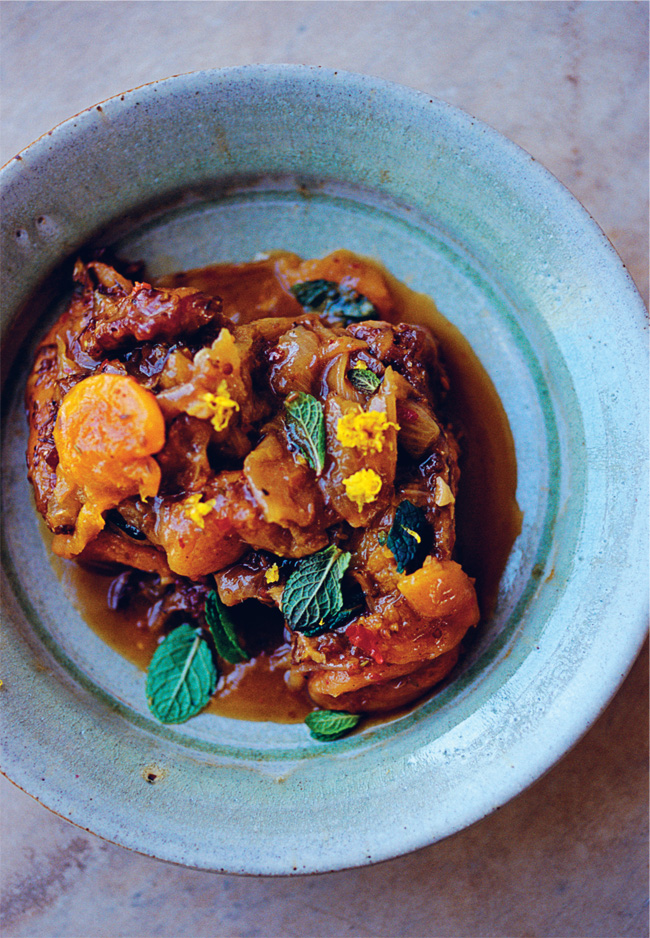
Braised neck of lamb with apricots and cinnamon
Something sharp to cut the fat is good here. Dried apricots have a pleasing tang that works well. Like cooking apples work well with pork. Neck of lamb is my first choice for this treatment, but I would also recommend small shanks. They are easier to get hold of. You may need to turn them once or twice during cooking, as they will sit proud of the sauce.
I usually reckon on at least 300g neck of lamb per person. This sounds quite a lot, but we are talking about one of the most bone-rich cuts of meat, so the quantity of meat should be just about right. The hands-on work is very straightforward.
middle neck of lamb: 1.25kg (8 pieces)
plain flour: 3 tablespoons
groundnut or olive oil: 2 tablespoons, plus a little more
onions: 2 medium to large
cumin seeds: 1 teaspoon
ground coriander: 2 teaspoons
crushed dried chilli: half a teaspoon or so
garlic: 2 cloves
fresh ginger: a 3cm lump
lemon zest: 2 strips, about 6cm long
a cinnamon stick
dried apricots: 250g
stock or water: 750ml
To serve:
chopped mint: 2 tablespoons
finely grated lemon zest: a teaspoon
Dust the lamb with the flour and season with salt and black pepper. Heat a couple of tablespoons of oil in a large, heavy-based casserole to which you have a lid. Add the lamb to the pan and let the pieces brown lightly on both sides. You will probably need to do them in two batches. Remove them from the pan, leaving behind any oil (if the oil has blackened, wipe out the pan and start again with fresh oil). Set the oven at 160°C/Gas 3.
Peel the onions and roughly chop them. Add them to the pan and let them soften for ten minutes or so over a moderate heat. Stir in the whole cumin seeds and ground coriander. Sprinkle in the dried chilli, adding a little extra if you want more warmth (I don’t think the dish should be hot, just warm and fruity). Peel the garlic and slice it finely, then add it to the onions. Peel the ginger, shred it finely and add it to the pan together with the lemon zest and cinnamon stick.
Add the dried apricots to the onions, then pour in the stock or water. Return the lamb to the pan, tucking it in amongst the rest of the ingredients. Season carefully. Bring to the boil, cover with a lid and place in the oven for one and a half hours, until the lamb is tender enough to come away from the bone easily.
As you serve, scatter the surface with fresh mint and lemon zest.
Enough for 4
Mograbia
Also known as giant or Lebanese couscous, the pearl-sized grains should be cooked till they are soft but retain a little bite, too.
half a cinnamon stick
mograbia: 250g
parsley: a few sprigs
a little butter, melted
a small lemon (optional)
Put a large pot of water on to boil (the mograbia likes to move around as it cooks, like pasta). Salt the water quite generously, as you would for pasta, and add the cinnamon stick.
Tip in the mograbia and leave to come back to the boil. Turn the heat down slightly, then let it simmer merrily for ten for fifteen minutes, till al dente, rather as you would like pasta to be.
Remove the parsley leaves from their stalks and chop them quite finely. Stir them into the melted butter, adding pepper and a little grated lemon zest if you wish. Drain the mograbia, discard the cinnamon stick, then toss in the melted butter and parsley. Serve with the braised lamb above.
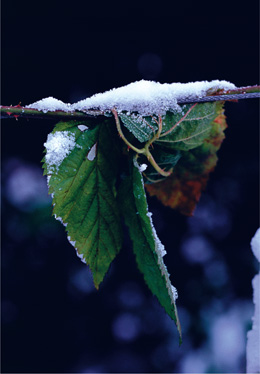
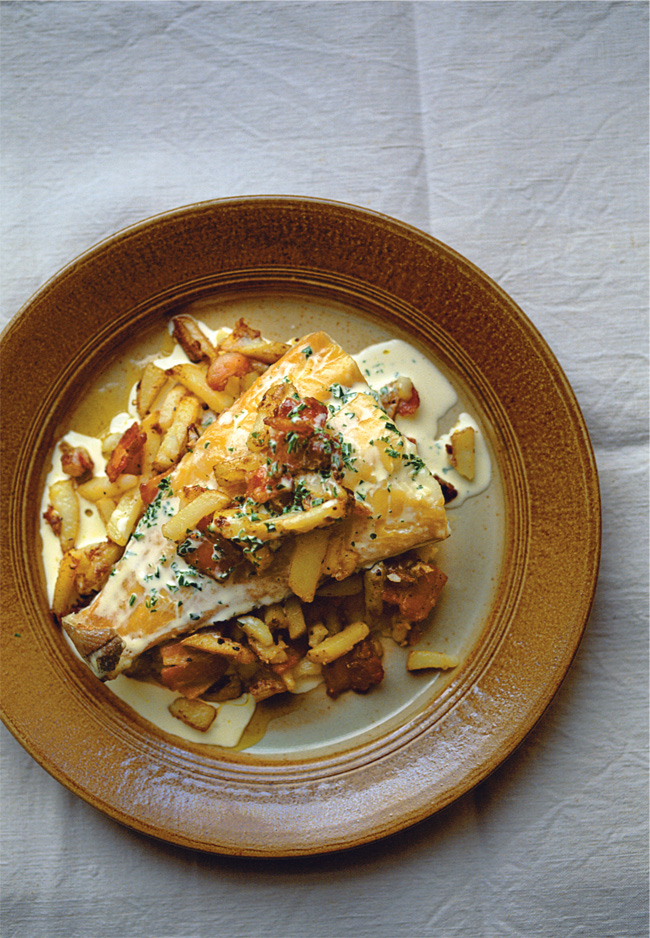
FEBRUARY 12
The perfect marriage of smoked fish and cream
I am not especially fond of cream in main courses, but there are a few dishes in this book – rabbit with tarragon, gurnard with potatoes, pork chops with pears, to pick randomly on three – where it features with good reason. Tarragon is often overwhelming without the calming notes of dairy produce; a dose of double cream brings the fish and potatoes together; the pork dish uses the cream to deglaze the pan, giving the dish a velvety texture. The cream is not essential but it has a clear purpose.
Tonight I make the most of the masterful marriage of smoked fish and cream. Cream and smoke produce a calm and gentle partnership, working in dish after dish.
Smoked haddock with potato and bacon
unsmoked streaky bacon: 6 rashers
rapeseed oil: 3 tablespoons
medium potatoes: 400g
smoked haddock fillets: 500g
double cream: 500ml
bay leaves: 2
black peppercorns: 6
finely chopped curly parsley: 2 tablespoons
Cut the bacon into pieces roughly the size of a postage stamp. Warm the oil in a non-stick frying pan and add the bacon pieces, letting them colour lightly.
Cut the potatoes, without peeling them, in 1cm-thick slices, then cut each slice into short pieces, like tiny chips. Tip them into the pan with the bacon and fry for about fifteen minutes, until golden and cooked right through.
Meanwhile, put the smoked haddock into a pan with the cream, bay leaves and peppercorns. Bring almost to the boil, then turn down the heat and simmer for fifteen minutes. Put the lid on and leave to infuse for five minutes or so.
Divide the potatoes and bacon between two warm plates, lift the haddock out of the cream and place a fillet on each plate. Stir the chopped parsley into the cream, then spoon it over the fish and serve.
Enough for 2
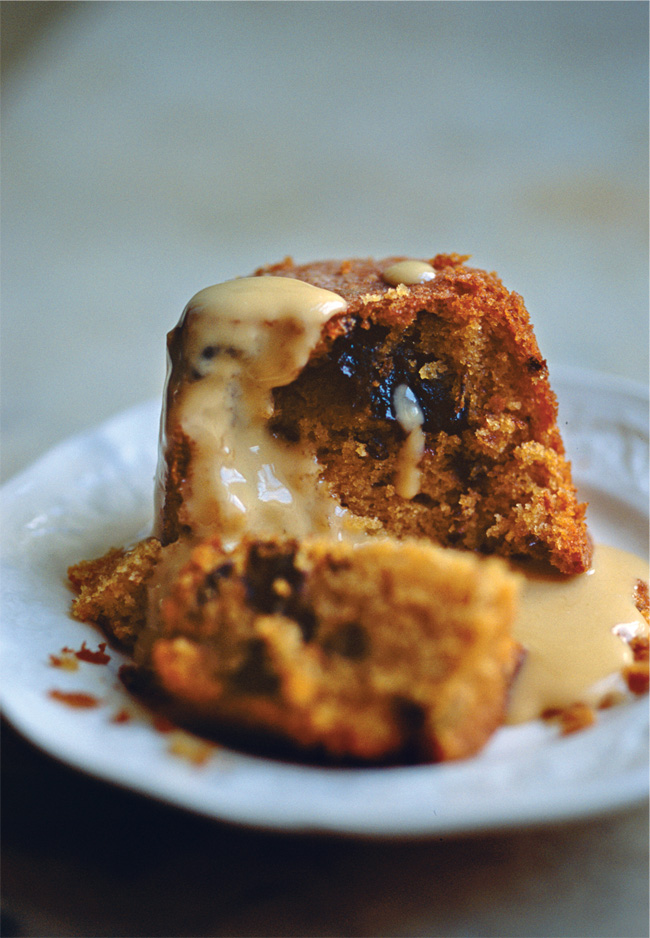
FEBRUARY 13
Sharing a pudding
Sharing comes naturally to me. It is, after all, at the heart of what I do. Writing down a recipe is a way of passing something you enjoy on to someone else. A gift, yes, but also a way to make a living. And whilst I like sharing plates of dim sum, tapas and boxes of chocolates (though I generally stop short of double-dipping), I find myself divided over the merits of sharing a pudding. Nothing makes my heart sink like a restaurant order of one pudding and four spoons. I have no wish to sound greedy but I would really rather everyone ordered their own.
At home, I can never make up my mind whether I prefer a large, dig-in type of pudding or an individual one. As much pleasure as can be had in doling out generous spoonfuls of trifle or steamed treacle pudding to a gathering of friends, family and assorted appetites, there is something rather delightful in having a tiny pudding all to oneself.
Today is cold and wet. A sponge-pudding kind of day. I make a cluster of little puddings with brown sugar and soft prunes that I soak in sherry. Baked not boiled, they turn out moist, caramel sweet, and cute and plump as cherubim. So much more charming than a whole one cut into portions.
Little prune puddings with caramel sauce
The accompanying brown sugar and cream sauce seems, at first, to taste rather sweet, but once it shares a spoon with the fruit pudding its inclusion is suddenly explained. I have used soft, ready-to-eat Agen prunes here but ready-to-eat dried apricots could be good too. I would suggest you use medium eggs rather than large ones, which may result in the mixture slightly bubbling over the top.
ready-to-eat Agen prunes: 10
medium-dry sherry: 2 tablespoons
butter: 120g
light muscovado sugar: 70g
caster sugar: 70g
eggs: 2, lightly beaten
self-raising flour: 120g
For the sauce:
light muscovado sugar: 50g
double cream: 250ml
Butter and lightly flour four 200ml pudding tins. Don’t be tempted to skip this step, otherwise your puddings may stick. Roughly chop the prunes and pour the sherry over them. Set aside. Set the oven at 160°C/Gas 3.
Cream the butter and sugars together till light and fluffy. Add the beaten eggs a little at a time (introduce a spoonful or two of flour if the mixture looks as if it might curdle), then gently fold in the flour.
Stir in the chopped prunes and any liquid. Divide the mixture between the pudding bowls – it should fill them by two-thirds – and bake in the pre-heated oven for forty to forty-five minutes, until springy and golden. To turn the puddings out, run a tiny palette knife around the inside of the tins, then invert them and shake firmly.
For the sauce, put the sugar and cream in a saucepan, bring to the boil and simmer for two minutes. Serve with the puddings.
Enough for 4
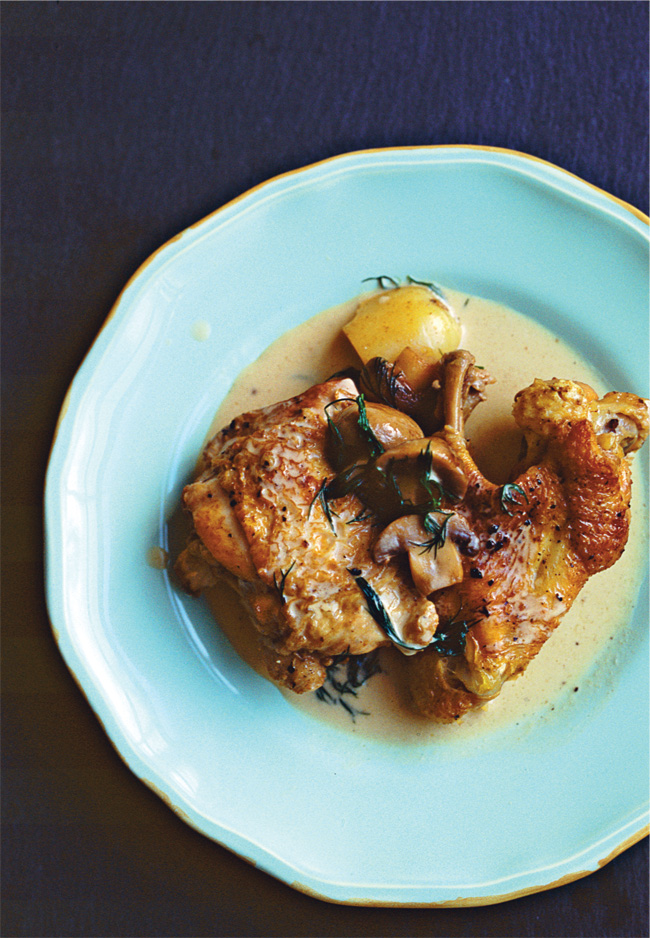
Chicken with potatoes and dill
A mild treatment for chicken, with soft flavours. Steamed rice, possibly brown basmati, would work nicely here.
butter: 30g
olive oil: a tablespoon
a chicken, jointed into 8 pieces
small chestnut mushrooms: 250g
small potatoes: 400g
cider: 500ml
double cream: 150ml
a small bunch of dill
Melt the butter in a casserole and add the oil. When it starts to sizzle, put in the chicken pieces. Season with salt and pepper, then leave to cook over a moderate heat until the chicken is pale gold on both sides. Remove from the pan and set aside.
Halve or quarter the mushrooms, depending on their size, and add them to the pan. Let them soften, adding a little more butter or oil if necessary. Scrub and halve or quarter the potatoes. Add them to the pan and leave till lightly coloured, then pour in the cider. Return the chicken to the pan and bring to the boil. Immediately the liquid is boiling, lower the temperature so that it simmers gently.
Cover with a lid and leave to cook for thirty minutes or until the chicken is cooked right through. Check by pushing a skewer into the thickest part; if the juices run clear, then it is done.
Remove the chicken. There will be a lot of liquid. Turn up the heat and boil to concentrate the flavours, letting the quantity of liquid reduce by about a third. Stir in the cream and the chopped dill, then season to taste. Wait for a minute or two, then remove from the heat and serve.
Enough for 4
FEBRUARY 17
A can of butter beans
There are some who turn their noses up at a can of beans. As indeed I do on occasions, when I am in the mood for soaking, draining, boiling, skimming, testing, draining, cooling and dressing dried beans. But a can or two of butter beans (or the oval, green flageolet; tiny, bead-like haricot; or white cannellini, the dragée of the bean world) has got me out of jail more times than I can shake a wooden spoon at.
Rinsing the beans will rid them of the slimy canning liquor but it is best done under a softly running tap if you are not to mash them to a watery hummus. Butter beans are the meatiest of the canned beans, the ones you can roll over in your mouth like the golden toffees in a tin of Quality Street. They are similar to, but not quite the same as, the delicious lima beans that are so popular in the US.
I wouldn’t argue with those who say a lovingly made bean bake, simmered and then cooked in a low oven, is better than the quick canned-bean supper I made tonight, but I am not after perfection here, I’m after something good to eat following a long day at my desk.
Butter beans with mustard and tomato
onions: 3
garlic: 3 large cloves
olive oil: 3 tablespoons
thyme: a few sprigs
bay leaves: 2
crushed tomatoes (or tomato passata): two 400g cans
butter beans: two 400g cans, drained
medium chillies: 2, deseeded and chopped
black treacle: 2 tablespoons
grain mustard: a tablespoon
smooth French mustard: a tablespoon
Peel and roughly chop the onions and garlic, put them in a heavy-based casserole with the olive oil and cook over a moderate heat till they are soft and pale gold. An occasional stir will prevent them sticking to the pan.
Add the thyme, bay leaves, tomatoes, drained beans and 250ml water and bring to the boil. Season with salt and black pepper and stir in the chillies, treacle and mustards. Partially cover with a lid and leave to simmer gently for thirty minutes or so, until the sauce has thickened a little. Serve hot.
Enough for 4
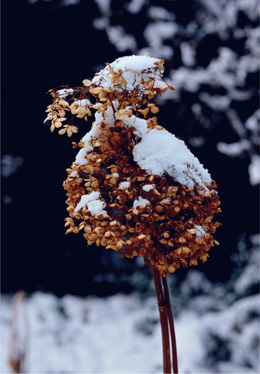
FEBRUARY 18
Little cakes – getting a good start
It is the creaming together of the butter and sugar that tends to get overlooked by those new to cake making. Yes, the raising agent – baking powder or self-raising flour – plays an essential part in the texture of your cake, but the amount of time you give to the initial creaming should never be underestimated.
The right beater helps. A wooden spoon and elbow grease will work, but things have moved on, and a machine of some sort will give a quicker and frankly better result. A hand-held electric beater or an electric mixer has the power to produce a vastly superior mixture, where the sugar and butter are whipped up into something resembling soft ice cream, like an old-fashioned Mr Whippy.
Little cakes are a good place to start. Individual cakes are usually better-natured than a larger, family-sized sponge, and any shortcomings can be more easily masked. Not for nothing the success of the ubiquitous buttercream-crowned cupcake.
I’m guessing here, but I suspect the world doesn’t need another cupcake recipe, which is why I set about making something with a little more heart and soul. A cake with a backbone, not to mention an interesting texture, which comes from rolled oats and dried apricots. It’s as near as I can get to giving you a cupcake recipe.
Little apricot and oat cakes
You will need about 16 paper muffin cases and a couple of muffin trays or tart tins to hold them.
butter, at room temperature: 225g
golden caster sugar: 225g
eggs: 3
dried apricots: 160g
self-raising flour: 225g
chopped mixed candied peel: a tablespoon
the grated zest of an orange
rolled oats: 3 tablespoons
a little demerara sugar
Set the oven at 180°C/Gas 4. Put the butter into a food mixer with the sugar and beat together until light and fluffy. The mixture should be pale, almost the colour of double cream. Break the eggs and beat them lightly, just to break them up, then beat them into the butter and sugar mixture a little at a time. Chop the apricots in a food processor till they resemble fine orange grit.
Add the flour to the cake mixture, through a sieve if you wish, stirring gently with a large metal spoon until no flour is visible. Stir in the chopped apricots, peel and orange zest.
Divide between the paper muffin cases, scatter with the oats and a good pinch of demerara sugar and bake in the preheated oven for twenty to thirty minutes, until risen (they may sink slightly in the centre) and golden brown.
Makes about 16
FEBRUARY 19
The beauty of kale
When it is touched with frost, it is hard to picture a leaf so beautiful as kale, even more than a nasturtium with morning dew caught in its veins. But there is more to it than that. The frost will sweeten the strident notes of the brassica, just as it does with sprouts and parsnips.
Cabbage and pork is an age-old marriage that I am still finding new versions of. Brussels sprouts, fried and tossed with bacon and cream, was a recent one; white cabbage with crumbled black pudding; a salad of sprouted broccoli and shredded coppa. All variations on a theme that works brilliantly. Chorizo has a spiciness that goes nicely with kale but, more importantly, it has great pearls of fat that will work the same magic with the dark, bitter leaves as sausages do for sauerkraut and streaky bacon does for Brussels sprouts.
Kale with chorizo and almonds
Good-quality cooking chorizo is not the cheapest of meats but I find a little goes a long way. When this recipe was first published in my column I was asked why I suggested discarding the oil, especially as it contains so much chorizo flavour. A good point, but I felt there was enough fat in the dish already. So the suggestion is just that. Leave the spicy, orange, liquid fat in, if you wish.






